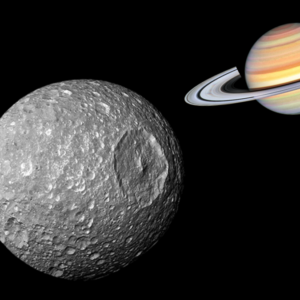
The image captured is not a terrestrial landscape but rather a snapshot from the lens of the Mars Reconnaissance Orbiter (MRO), a spacecraft on a mission to uncover clues about water and ice presence on the Martian surface.
Within the Aeolis Planum region, this striking image unveils an ancient river system, evoking vivid depictions of a bygone Martian era vastly contrasting with its present appearance.
Operating at an altitude ranging from 155 to 196 miles (250 to 316 kilometers) above the Martian terrain, the MRO meticulously documents intricate features, providing unparalleled insights.
These prominent ridges showcased in the image serve as tangible remnants, delineating the pathways of rivers that once meandered through Mars’ distant past, offering tangible evidence of the planet’s watery history.
“River beds often get filled with gravel and the surrounding terrain is often built up of fine-grained mud from river overflows. The gravely river bottom and the fine-grained surroundings can lead to a strange phenomenon that geologists call inverted channels,” the space agency had written.
“After the river disappears, the fine-grained surroundings can be easily eroded away leaving the gravely river bed as a high-standing ridge. The angle at which the ridges join together indicates that these rivers flowed from top-right to bottom-left.”
The High-Resolution Imaging Science Experiment (HiRISE) camera aboard the Mars Reconnaissance Orbiter (MRO) snapped this image, which NASA added to its catalog on January 31, 2024.

The Mars Reconnaissance Orbiter (MRO) stands as a remarkable testament to humanity’s quest to understand the mysteries of Mars. Crafted meticulously for the sole purpose of unraveling the secrets of the Red Planet, it epitomizes NASA’s relentless pursuit within the Mars Exploration Program.
Embarking on its journey from the historic Cape Canaveral in August 2005, the MRO embarked on a pioneering odyssey towards Mars, finally gracing its surface with its presence in March 2006.
Since its arrival, the MRO has ceaselessly gathered invaluable insights, enriching our understanding of Mars in ways previously unimaginable. Its data trove, exceeding an impressive 450 terabits as of July 2023, serves as a treasure trove for scientists, offering profound glimpses into the Martian terrain and atmosphere.
Among its notable achievements, the MRO has played a pivotal role in paving the way for future Martian missions. Its meticulous reconnaissance has aided in the identification of safe landing sites, ensuring the success and security of NASA’s Mars landers as they navigate the harsh Martian landscape.
Moreover, the MRO has unearthed tantalizing evidence of water’s presence on Mars, a discovery of profound significance. By detecting pure water ice glaciers nestled within newly formed craters in the Northern polar region, it has sparked hope and curiosity about the potential for past or present Martian habitability.
Additionally, the MRO’s findings of chloride deposits hint at a Martian landscape once dotted with lakes, offering further clues to the planet’s enigmatic past and raising intriguing questions about its evolution over time.
The Mars Reconnaissance Orbiter stands as a beacon of human ingenuity and exploration, unlocking the secrets of Mars one revelation at a time and laying the groundwork for future endeavors to unravel the mysteries of our neighboring planet.
What are your thoughts? Please comment below and share this news!
True Activist / Report a typo


